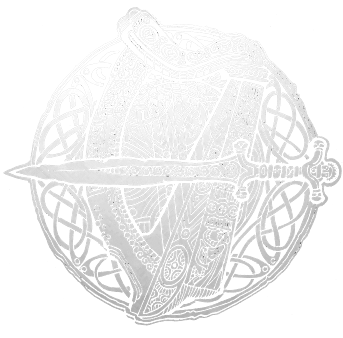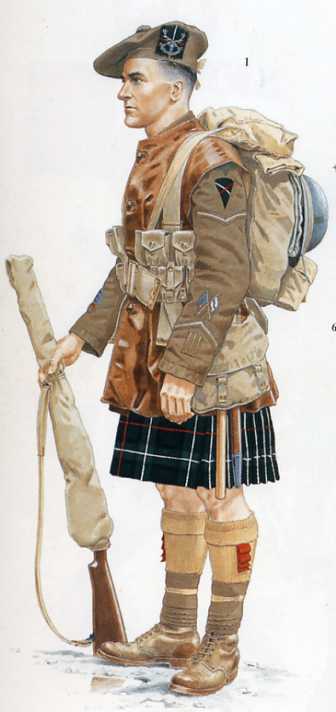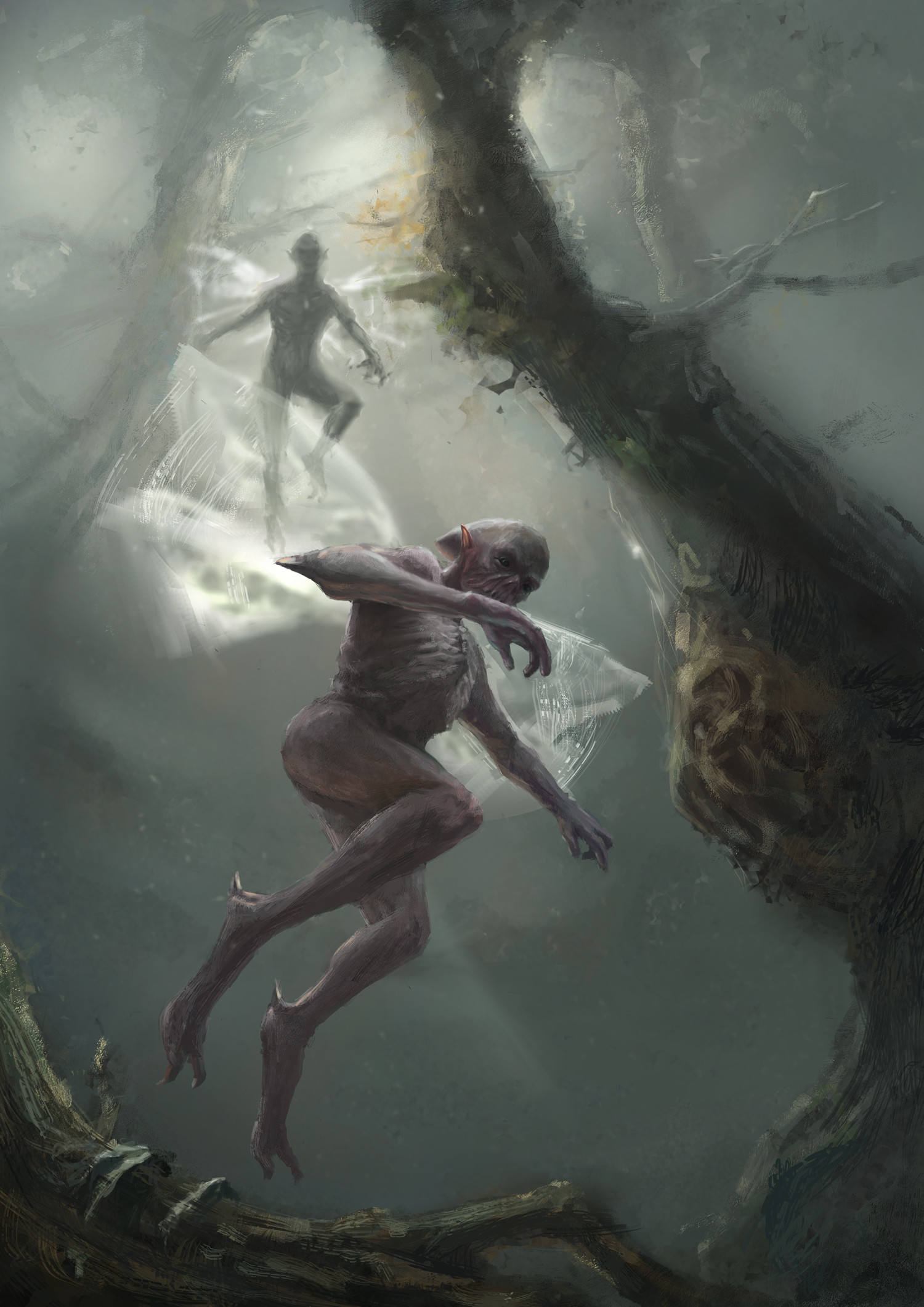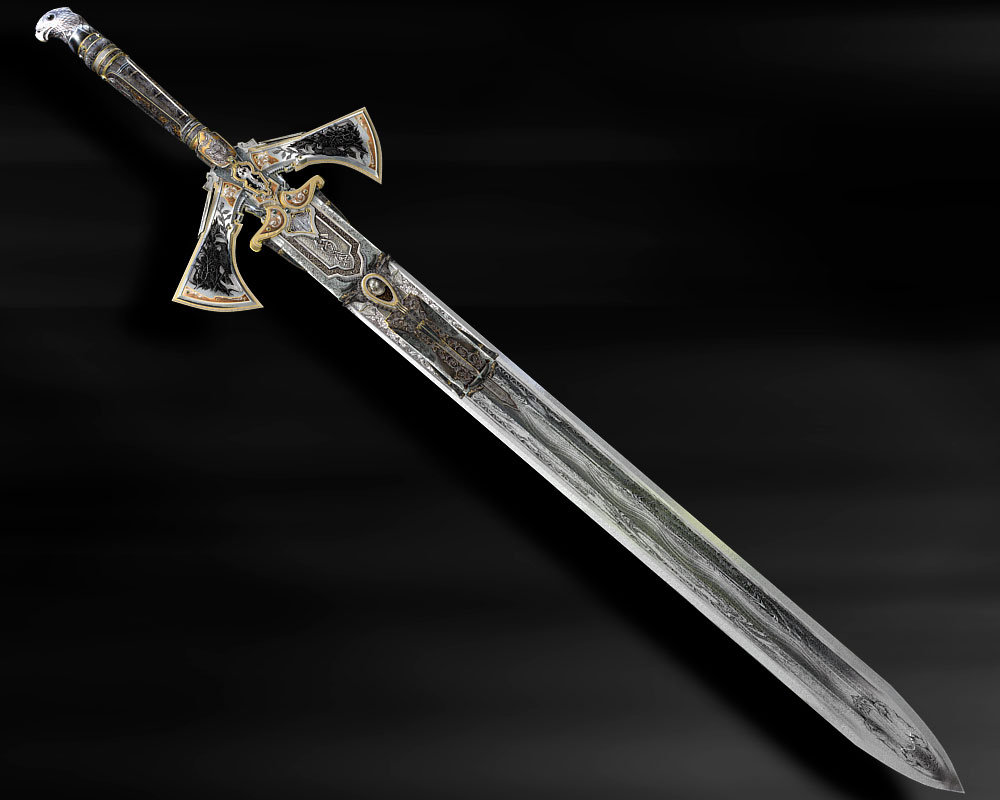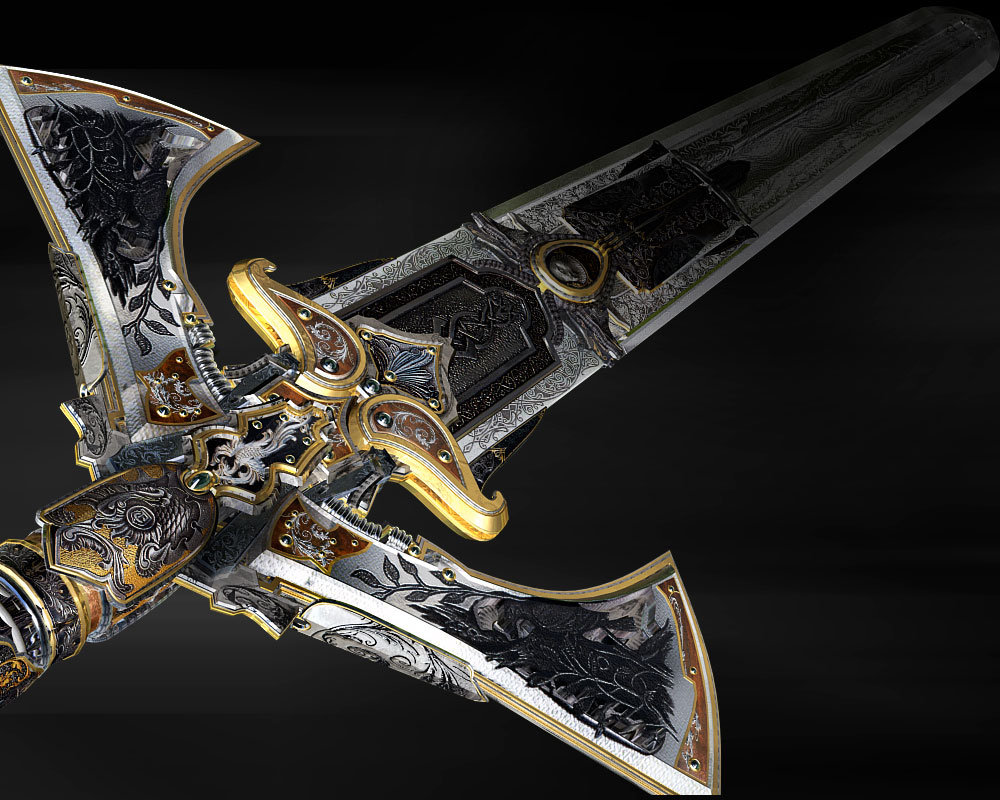She was a Phantom of delight
When first she gleamed upon my sight;
A lovely Apparition, sent
To be a moment's ornament;
Her eyes as stars of Twilight fair;
Like Twilight's, too, her dusky hair;
But all things else about her drawn
From May-time and the cheerful Dawn;
A dancing Shape, an Image gay,
To haunt, to startle, and way-lay.
I saw her upon nearer view,
A Spirit, yet a Woman too!
Her household motions light and free,
And steps of virgin-liberty;
A countenance in which did meet
Sweet records, promises as sweet;
A Creature not too bright or good
For human nature's daily food;
For transient sorrows, simple wiles,
Praise, blame, love, kisses, tears, and smiles.
And now I see with eye serene
The very pulse of the machine;
A Being breathing thoughtful breath,
A Traveller between life and death;
The reason firm, the temperate will,
Endurance, foresight, strength, and skill;
A perfect Woman, nobly planned,
To warn, to comfort, and command;
And yet a Spirit still, and bright
With something of angelic light.
When first she gleamed upon my sight;
A lovely Apparition, sent
To be a moment's ornament;
Her eyes as stars of Twilight fair;
Like Twilight's, too, her dusky hair;
But all things else about her drawn
From May-time and the cheerful Dawn;
A dancing Shape, an Image gay,
To haunt, to startle, and way-lay.
I saw her upon nearer view,
A Spirit, yet a Woman too!
Her household motions light and free,
And steps of virgin-liberty;
A countenance in which did meet
Sweet records, promises as sweet;
A Creature not too bright or good
For human nature's daily food;
For transient sorrows, simple wiles,
Praise, blame, love, kisses, tears, and smiles.
And now I see with eye serene
The very pulse of the machine;
A Being breathing thoughtful breath,
A Traveller between life and death;
The reason firm, the temperate will,
Endurance, foresight, strength, and skill;
A perfect Woman, nobly planned,
To warn, to comfort, and command;
And yet a Spirit still, and bright
With something of angelic light.
- Dehru armies tend to be well-organised and have a relatively uniform core, with additional an additional layering of unique forces depending on regions available to any given shid. While the shid is expected to be a field commander and combatant, individual armies are under the overall control of a Kurinbita, and the salaries of all ranked officials are paid in cash rather than loot. Any Dehru army is made up of infantry, cavalry, and behemoths. While in the past chariots were used, they have long been replaced by cavalry. In addition to these three wings, a Supply & Transport wing is vital, and those with access to the Mimrabans may have naval capabilities. Each wing is under the control of an Ubikdarsha, and since the times of the Ramshidra, every Ubikdarsha has an advisory board of ten members, each holding the rank of Nushahi. The four wings and their boards are:i. Supply & Transport
ii. Infantry
iii. Cavalry
iv. Behemoths- i. Behemoths - Shids rely on behemoths for achieving victory in battles. They are the premium wing of the army and rely on their strength and shock effect to rout the enemy from the bloodletting field. Able to frighten horses and terrify men, trample infantry and cavalry alike, and even demolish wooden fortifications, elephants can charge at fifteen miles per hour while dircaans can charge at 20. At that speed, however, they are hard to stop, and they often tended to run amok, trampling friend and foe alike. Elephants and three-horned Khadaar dircaans are outfitted with a howdah covered with cloth or carpet and bells around the neck and rump/tail. Lower-ranked warriors armed with bows and other missiles are seated in the howdah. Three or four archers and a driver ride on each of these behemoths, though men armed with extra long spears are also common. Their primary role is in the charge, for which the strongest and largest bulls are specially trained, their tusks and horns tipped with sharpened steel, and their flanks protected by bamboo or leather armour. They are also used to smash palisades or push down gates, or for other combat engineering tasks, such as forming a bridge over shallow rivers or ditches. Smaller bulls and cows are used as baggage animals, giving an excellent cross-country performance in a country that has few roads. Even the best trained elephant was liable to be panicked by the sights, smells and sounds of battle, especially by incendiary devices, and might, joined by its companions, turn into a common enemy, trampling friend and foe alike. Tactics used against elephants include large caltrops, iron-pointed triangular devices set in the ground to impede elephant and cavalry advances. Dehru pride prevented leaders from learning from previous mistakes and particularly from the ineffectiveness of elephants against the mobile nomadic raiders of the north. Dehrus valued strength in numbers over speed and mobility, a doctrine that usually resulted in defeat.
The behemoth's tusks and horns are sometimes sharpened or lengthened with sword blades, and elephants are able to pick up enemy soldiers with their trunks or trample them underfoot. The standard battlefield role of behemoths is in the assault, to break up the enemy ranks, but they are also used in sieges, to push over gates and palisades or, in the case of elephants, to serve as living bridges. Equipped with an iron chain in its trunk and taught to wield it in all directions, an elephant could wreak havoc against an enemy force. Thus in full, behemoths have the following functions:a. Marching in front, making new roads.
b. Protecting the flanks.
c. Helping to cross water and climb and descend from mountains.
d. Breaking up enemy formations, trampling enemy’s army.
e. Causing terror, capturing battle positions.
f. Destroying ramparts, gates, and towers.
ii. The Cavalry. The cavalry being the most mobile arm in the army is used to influence the battle. It is tasked for the following. The majority of Dehru armies continue using heavy cavalry clad in mail armor and equipped with maces and lances, who use shock action to break the enemy line. This is despite the fact that their nomadic opponents, and even the Khadaar nomads, tend to use horse archers. Usually shids from the Khadaar tend to make use of nomads and so have a mounted archer force.a. Scouting out bloodletting fields, camping sites, forests.
b. Securing level ground, water supply sources.
c. Destroying enemy supply lines and reinforcements while protecting their own.
d. Extending the range of raids.
e. Assaulting the enemy’s battle formation.
f. Attacking the enemy from the rear.
g. Cutting off the enemy’s line of supply.
h. Isolating the enemy’s strong point.
i. Feigning retreat so as to goad the enemy to break formation and pursue, before turning around and routing them
j. Plugging gaps in own defences made by enemy’s assault.
k. Making the initial attack, penetrating or breaking through.
l. Pursue the defeated enemy.
m. Rallying the troops.
iii. Infantry. There are primarily two types of infantry - archers and swordsmen, and both are employed together. Archers provide tactical support and works the artillery while swordsmen carry out close combat. The swordsmen carry a large shield for protection as well as a sword for the melee, and they carry a spear or javelin for the first phase of battle. The infantry is the main fighting arm as it has the ability to fight over all types of terrain during all seasons and both by day and night. Infantry is also used to protect captured ground. The infantry is also meant to provide close support to the other wings, particularly behemoths.
The bow is one of the primary weapons in any Dehru army. The Dehru longbow is made either from metal or bamboo. The longbow is considered to be a potent weapon and is capable of cutting through the thick armor worn by heavy cavalry. Such longbows fire a long bamboo cane arrow with a metal head. Unlike the composite bows of the nomads, bows of this design are less prone to warping in damp and moist conditions. Iron shafts are used against armored elephants, and fire arrows are also part of the bowman’s arsenal. Archers are protected by swordsmen equipped with shields, javelins, and swords.
iv. Supply & Transport. This provides logistical support and ensures that the army has all its requirements. This usually includes managing camp followers and organising supply lines. - The lowest grouping in any Dehru army is at platoon level. A platoon is made up of one mounted rider, supported by six footmen, three of which are archers (Pratiyodhas) and the remaining three are swordsmen armed with a sword, spear, and shield (Pratigopas). The archers are placed in front so that they can exploit the range of their weapons, then when the battle comes to close contact they recede and the swordsmen advance in front.
- Buttra. Each behemoth enjoys the support of five platoons. This entire group including a behemoth, five riders, thirty footment (15 archiers and 15 swordsmen), formed the smallest tactically grouped sub-unit called the Buttra. The patti was commanded by a Battrika.
- Sil. Consisted of ten Buttras and was commanded by a Silabuttra. (10 Behemoths, 50 riders, 300 footment)
- Korasil. A battle group made up of ten Sils commanded by a Korsilabuttra. (100 Behemoths, 500 riders, 3,000 footmen)
Dehru armies have a strictly hierarchal system of administration. There is a battle hierarchy and a non-battle administrative hierarchy. The non-battle administrative hierarchy is as follows:- x1 Shidasta (Commander-in-Chief, always the Shid or Ramshid)
- x1 Kurinbita for every army (Army Commander)
- x4 Ubikdarshas for every army (Wing Commander) - Behemoth, Cavalry, Infantry, Supply & Transport
- x10 Nushahis for every wing (Advisor)
The battle hierarchy is as follows:- Shidasta/Kurinbita
- Korasilabuttra
- Silabuttra
- Battrika
A Korasilabuttra is subordinate to an Ubikdarsha outside battle. There are other ranks that are relevant outside of battle, such as the position of Camp Superintendent, Drill Instructor, Quartermasters, and Medicinemen.
Every unit and sub-unit has its own distinguishing trumpet sound, flags, and banners, and these are used to signal commands: dividing themselves into sections, joining together, halting, advancing, turning and attacking, etc. Secret agents, prostitutes, artists and artisans and retired officers are usually employed by higher-ups to keep watch over the loyalty or otherwise of the troops. - Duties of the Kurinbita.
- The Kurinbita must be an expert in the use of all kinds of weapons used in warfare, riding behemoths and horses, and he is conversant with the relative strength of the four wings of the army and how to deploy them in battle.
- Responsibilities.
- Ensure discipline.
- Organise formations.
- Devise strategies and tactics.
- (aa) Choose the best time to start an expedition.
- (ab) Choose the best terrain and the best season for fighting.
- (ac) Arrange the disposition of own forces (in the light of the enemy's array).
- (ad) Plan the breakup of the enemies rank.
- (ae) Destroy enemies scattered troops.
- (af) Besiege and destroy enemy forts.
The Duties of the Ubikdarsha of the Behemoths.- (a) Protection of behemoths.
- (b) Construction and Maintenance of stables, stalls.
- (c) Training of behemoths.
- (d) Assigning tasks to them.
- (e) Equipping them for war
The Duties of Other Ubikdarshas.- (a) Knowledge of different type of equipment needed for his wing and use of such equipment in war.
- (b) Giving appropriate training.
- (c) Keeping account of equipment and animals under his charge.
- (d) Maintaining their equipment in good condition and repairing them when necessary.
- (e) Supervising the work of all employed by him.
- (f) Maintaining discipline.
- (g) Reporting to higher-ups as to the state of readiness of his troops.
Other Commanders:- (a) Radah-misa (Commander of the Ramshid's Guard). This very high official, who ranked just below Kurinbita, has to have served as an Ubikdarsha. He is considered directly in line for promotion to Kurinbita. His importance is due to his responsibility for the security of the Ramshid (or Shid) and other members of the ruling family in the palace. There are two other officers directly under his command who assist him in ensuring the safety and security of the Shid and ruling family. One is the Rijaruna, the commander of the body of all-male swordsmen who guard the palace, and the other is the Vilaruna, the commander of the all-female archers who are the immediate guards for the Shid's person and his personal quarters.
- (b) Burantal (Marchlord) The Burantal is responsible for guarding the borders of the shidra. For this purpose, border posts are established; their primary purpose is to check entry of enemy agents and other undesirable elements, as well as the collection of customs duties and control over the entry of foreigners. Border posts are sited on naturally defensible terrain so that they can also serve a defensive purpose. The Burantal commands detachments from the army for the protection of his posts.
- (c) Pirjakamun (Fort Commander). The Pirjakamun is an army officer who commands detachments of regular troops that acted as garrisons in great fortresses. These forts are to be built on naturally defensible terrain and are to act as bases for military operations. They also offer refuge in case of need.
- Dehru martial philosophy lists six types of troops that may become available to a commander. The troops are i. regular noble warriors, ii. local volunteer auxiliaries and militias, iii. organised mercenaries, iv. allied troops, v. enemy deserters, and vi. tribal levies.
- (a) Regular Noble Warriors.
These are the standing army of a shid, composed of warriors from noble families that may have served a given shid's family for several generations. They are residents of the shidra and their interest coincide with those of the shid. Their loyalty is assured, their weapons, equipment, and their animals are the best the shidra can provide, and their motivation and state of training is high. A proportion of these noble warriors are generally left behind for the security of the shidra. Around one-fourth are left in the capital. These noble troops should form a large part of an expeditionary force if:- (i) The enemy’s troops are well trained.
- (ii) The campaign is expected to be long and difficult.
- (iii) Other available troops are unreliable.
- (iv) Surplus noble troops are available after fully meeting the requirements of the capital and the rest of the shidra.
- (b) Local volunteer auxiliaries and conscripted militias.
These are locally raised volunteers and conscripts engaged for the duration of the campaign. Volunteers are usually veterans while conscripts usually have no battle experience. Depending on local or village cultures, some of these may be trained in the handling of personal weapons. By profession they are either farmers or small traders or peasants. As natives they have a stake in the security and welfare of the state, particularly in defensive campaigns. Such troops revert back to their professions after the end of the campaign. Conscripts are usually used for menial labour and are not properly incorporated into the army structure until they see first blood. Their first battle usually involves them being thrown into what usually becomes a massacre. Their employment is recommended if:- (i) The enemy is weak and a large number of volunteers are available.
- (ii) The campaign is expected to be easy with little actual fighting.
- (iii) Success is more or less assured by the use of other means like covert operations or diplomatic efforts.
- (c) Organised mercenaries.
These are trained, equipped, and organised bodies of mercenaries under their own leaders who are available for hire to fight for a specified period of time. They are generally motivated by the promise of money and loot, though certain religious orders organise into sometimes fearsome mercenary groups. Their employment is recommended when:- (i) The opposing forces consist of primarily mercenaries.
- (ii) Much hard fighting is not anticipated.
- (iii) Mercenary troops are available in adequate numbers for the campaign as well as for the defence of the capital.
- (d) Allied troops.
These are troops loaned for a campaign by an ally. Their utilisation is advocated if:- (i) Such troops are available in large numbers.
- (ii) A short campaign is anticipated because of good chances of early success of diplomatic moves underway.
- (iii) To oblige an ally.
- (iv) It is proposed to deal at first with the irregular part of enemy’s army, or with his allies and his population centres, prior to attacking his main forces.
- (e) Enemy deserters.
These comprise enemy deserters and prisoners of war. They are not to be trusted but their employment is recommended if the eventual outcome of battle is of little consequence. - (f) Tribal levies. These are bands of tribals, either tribal warriors from the jungles of the Muraymuna, nomads from the Khadaar, or highland clansmen from the Qaywandar, who join a shid under the command of their own chieftains with the primary purpose of amassing loot. These bands, along with enemy deserters, are considered unreliable by martial philosophers and as dangerous as snakes. These two categories of troops may be employed if:
- (i) They are available in large numbers to attack the enemy’s cities and irregular troops.
- (ii) It is proposed to delay the employment of the main force.
- (iii) It is expedient to get rid of them because their loyalty is suspect. Deserters may be employed as guides or to counter the use of similar levies by the enemy.
An army composed of units recruited from diverse sources and ready to fight for plunder may be an energetic army, but an army whose soldiers belong to the same region, social group, or profession is a mighty army and may well continue to fight even if its pay is in arrears and there is shortage of food. It shows bravery even in adverse conditions and its loyalty cannot be subverted. A shid should make efforts to obstruct his enemy's mobilisation. His pool of potential recruits should be intercepted and if necessary recruited into one's own army. Such personnel should, however, be discharged at the right time - though well before the commencement of actual operations. - (a) Regular Noble Warriors.
Reserves.
Reserves hold an important place in battle formations, and are directly involved in shaping the bloodletting field. They are placed directly under the control of the Shidasta or Kurinbita. A firm base is to be established on a suitable terrain approximately 600-700m behind the main force and it is here that the reserves are placed. The reserve consists of one-third of the best available troops. The commander is advised to be stationed at this firm base to be in a position to influence the battle by sending reinforcement when and where needed and to make the firm base a rallying point in case of a reverse.




















